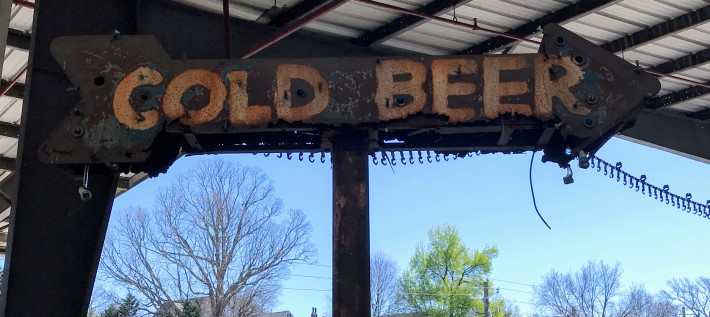
Before the second edition of “The Beer Bible” reached store shelves, showed up on electronic tablets or arrived wherever people are reading books these days, Jeff Alworth wrote that national tradition is beer’s Rosetta Stone. Take the time to read his post before moving on.
His book offers a description of the American, German and other traditions that parallel the excerpt about British tradition. Buy the book to read them, but for now a few sentences from his blog post:
The American tradition, which like so many others was a riff on an older one, involves the use of unique ingredients (American hops) and techniques (all the weird ways Americans use them). The hoppy ales developed here are made unlike any beers before them, and certainly taste like nothing brewed in the last 12,000 years. And, like monumentally successful beers of earlier eras—London porter, pilsner, Bavarian lager—they are now traveling around the world and getting reinterpreted in other countries where local brewers will twist and distort them as their own cultures intervene.
It is true that many brewers in the United States and elsewhere are doing this. But it is true that even more are doing something else, and not just beers based on their own longtime national tradition. They are making beers like ones that originated in the United States almost 150 years ago and became globally dominant. Before getting to that . . .
When Alworth was in Denver, actually Aurora, he talked about national tradition during a fascinating two-plus hours at Lady Justice Brewing, igniting some engaged discussion. Audience members pointed out that Americans want things bigger and bolder, and in the case of beer boozier.
I was reminded of something Italian winemaker Antonio Terni once said (as quoted in “The Accidental Connoisseur”):
“I will only say that Americans like too much in the glass. There’s always too much going on. Other than that, if we’re living in Planet America, that’s not necessarily the fault of Americans.”
Now back to another American beer that has traveled the world: adjunct lager.
Last week, during the virtual portion of the Master Brewers Conference, Greg Casey discussed “The Inspiring Histories & Legacies of American Lager Beer.” Casey, who worked for several of America’s largest brewing corporations before retiring in 2013, is writing a trilogy of books that focus on the period between the 1840s and 1940s.
He points out that America gave the world “ice cold beer here!” Americans learned about brewing adjunct lagers from the Germans, but made them their own. They perfected chill proofing, allowing beers to be served crystal clear even when cold, changing the look of beer and the culture of drinking beer.
Casey is a fan of what is generally known as “craft beer” but wants people to appreciate the historic role of adjunct lager. His son Troy started Casey Brewing and Blending, one of those breweries where you see people standing in line to buy unique beers. Greg Casey is also fond of pointing out that more than a hundred years ago large breweries using adjuncts fought against legislation that would have dictated what ingredients could and could not be used to brew beer. Such a law today would hamstring small breweries, including Casey Brewing and Blending.
In concluding his talk, Casey pointed to the cultural legacies of American lager beer:
– By the end of the 19th century adjunct lager had transformed beer from a bit player within the alcoholic beverage category to that of America’s “National Beverage.”
– That “National Beverage” was, and remains two centuries later, adjunct lager beer.
– As a style, whether imported or brewed domestically, American adjunct lager beer has been adopted by more nations as their own than any other style of beer.
– On a global basis, adjunct lager beer is today the world’s most popular style of beer.
In introducing the chapter on tradition, Alworth writes, “The invisible hand of culture dictates everything in beer. Understanding how brewers approach their craft in different countries is essential to unlocking their secret.”
Could it be that what is occurring (within, what we should remember is a niche) now with hops is part of an ongoing tradition of exploration? That, you will notice, is posed as a question, not a statement.